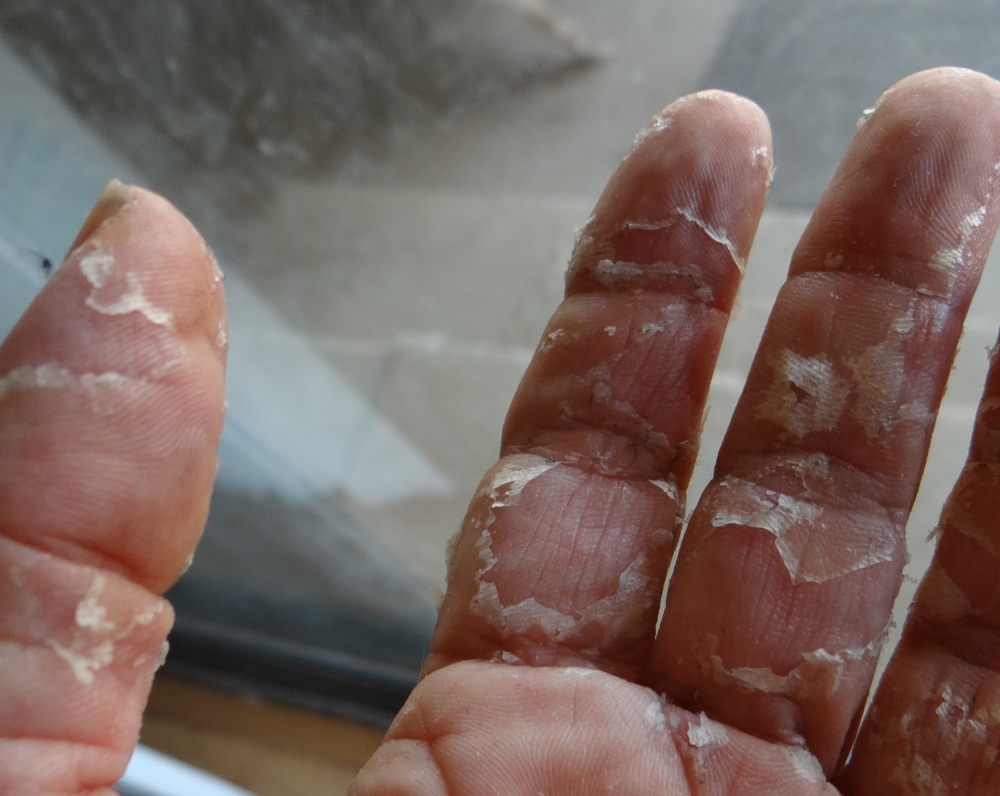There is a growing risk to your health and the health of your family. “Acrylates” are now being added to personal care products you probably use every day.
What is an Acrylate?
An Acrylate is a building block of acrylic, or plastic. If you’re a chemistry major, or just like the nerdy stuff, an acrylate is a monomer of acrylic.

What is a Sensitizer?
A Sensitizer is defined by OSHA as “a chemical that causes a substantial proportion of exposed people or animals to develop an allergic reaction in normal tissue after repeated exposure to the chemical.”Basically, this means the effect is cumulative. Once you reach your body’s tolerance level, you become allergic. At that point, even a minute amount will cause a painful reaction.
The condition of being sensitized to a chemical is also called chemical hypersensitivity.
Some sensitizers, like formaldehyde, have been recognized as a serious health hazard. Acrylates are sensitizers too! Yet, Acrylates are being put into more and more consumer products! Examples: Lotions, soaps, hair spays / gels, even hand sanitizers. If you use any of these products, you may be more at risk than you think!
Why You Should Care
Allergy or Irritant?
There are two type of contact dermatitis: Irritant and Allergic. According to the Journal of Clinical and Aesthetic Dermatology, in 80% of the cases, the offending substance is an irritant. That condition is called Irritant Contact Dermatitis (ICD) in 20% of the cases that substance has become an allergen and the patient now has Allergic Contact Dermatitis (ACD). Now the immune system is involved. A substance that started as an irritant can become an allergen.

An analogy would be if you took sandpaper and rubbed it on your skin. Your skin would quickly become irritated and sore. That’s an irritant. But if you just touch the sandpaper and then a day or two later break out in a rash, that would be an allergen. This delayed reaction is what makes it so difficult to pin down exactly what is causing the rash.
It took many doctors and a year and a half for me to find a doctor who tested me for the right allergens. For a long time I was told my condition was ‘psoriasis-like.’
The effect is cumulative
Sensitization occurs after repeated exposure. For most people, it takes an occupational level of exposure to become allergic. But there are exceptions. There are reported cases of becoming ‘sensitized’ after only one exposure.
If you get acrylic nails, and dye your hair, and use hair sprays, you many have more exposure than you think! The most common way consumers currently become allergic is from repeated use of acrylic fingernails!
Once allergic, the small amount that is now being put into personal care products, can cause a bad reaction. Avoidance is the only cure… but since Acrylates are now in lotions, hair spray, hand sanitizers, ink fumes, adhesives (like tape and glues), etc. Avoidance means avoiding many public settings!
Allergies are nothing to sneeze at!
If you already have some kind of allergy, you may be more susceptible to allergic contact dermatitis.
Allergies exist in many forms and affect us in different ways. Respiratory, Digestive, Dermatitis. Allergens can be food, pets, dust, pollen, and specific chemicals called sensitizers. Acrylates (along with formaldehyde and latex) are sensitizers.
The only way to test for an Acrylate allergy is with a Patch test. Specifically the NAC80 Comprehensive Series Patch tests. Other test do not test for Acrylates! Also, if the test strips are not properly handled and stored, there is a risk of False Negatives. Make sure you see a competent Dermatologist familiar with this test.
Are you at Risk?

Most Acrylate Allergies are caused by occupational level exposure. However, since the effect is cumulative over many exposures, you can be at risk from touching everyday products. The most common way people become exposed in a non-work environment is from getting artificial fingernails!
And manufacturers continue to add Acrylates to everyday products like hand sanitizers, hair spray, soaps, lotions, and even baby products!
References:
http://www.ncbi.nlm.nih.gov/pmc/articles/PMC2868883/
Hi! I’ve just found your website! I’ve suffered with an allergy to Methacrylates for over 6 years now after I trained as a nail tech. I then was told gel nails were ok but that triggered a reaction which means I can no longer use any product with acrylates in it, and as you say, there are many!!
LikeLike
Hello.
I have been struggling with an acrylate allergy for 3 years since my job as a beauty and nail therapist. I have stopped using all products, house cleaning products spray ext the lot. But I am still struggling with constant glare who and I just I want get rid of it. It is mainly on my face and under my eyes. My eyes are perminately puffy and sensitive. Is there anything you could recommend? Any shampoos ext that are safe as I’m sure there is hidden acrylates in most things. Thank you for your time. Sian
LikeLike
A terrible aspect is that these are becoming increasingly and incessantly prevalent in facial cleansers and moisturizers! For the delicate and sensitive facial skin, I think it’s a very bad idea!
LikeLike